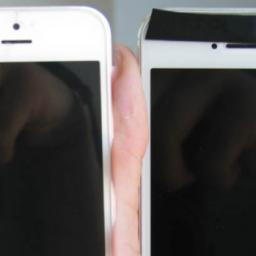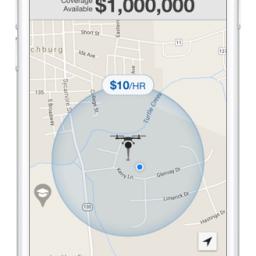With a lot of phones having small internal storage and no means with which to expand it (SD cards are still uncommon), there is a constant battle to make space. There is cloud storage but WiFi internet access isn't always available. There are USB OTG (On The Go) adapters that can provide storage but it's not natively supported on many devices either.
Now we have something a little different, a wireless USB thumb drive from SanDisk, called the Connect Wireless Stick. It looks like any other simple little flash drive, the difference is the inclusion of a WiFi module and internal battery to set it up as a wireless access point, which you can log into with either a web browser, or a dedicated app for mobiles; all the data now becomes accessible over WiFi. You can stream movies easily and smoothly, but beyond about 10ft, the speed does start to drop off, and by about 30ft, it slows to a crawl.
While there are other wireless storage options, they are either limited to SD card sizes, or based on large spinning hard drives not rerally practical for truly portable use. You are most likely to get about 8 hours of wireless access time (actual data transfer) on a Connect Stick battery charge, so it's worth remembering to turn the wireless feature off when not in use (it does have an auto-sleep mode). Prices start at just $24 for 32GB, $38 for 64GB, $72 for 128GB and a $100 for the large 200GB version. Full review can be
found here.

Media is covering why people
disable cameras by covering up the camera with tape on their laptops and mobile devices. Is this paranoia? Does the NSA or hackers really get into your phone or PC just to take pictures of you in the nuddy? Pipedot, I ask you: Do you cover up the camera on your devices, and if so, why?
The case for Planet Nine's existence keeps getting stronger. Astronomers have discovered several more objects in the extreme outer solar system whose orbital characteristics
hint at the existence of an unseen "perturber" in the dark depths far from the sun - a hypothetical world larger than Earth that scientists are calling Planet Nine. "If you want to put a number on it, I'd be somewhere like 80 percent sure that there's a Planet [Nine] out there," said Scott Sheppard.
In their 2014 study, Sheppard and Trujillo noted that several extremely distant objects share certain orbital characteristics, and suggested that these bodies' paths around the sun may have been shaped by a large planet in the region. This hypothesis was bolstered earlier this year. Computer simulations suggested that the gravitational influence of a roughly 10-Earth-mass planet about 600
AU from the sun could indeed explain the odd "clustering" in the orbits of Sedna, 2012 VP113 and a handful of other distant objects.
Finding Planet Nine via a blind search would be incredibly difficult and time-consuming. The putative world, while big, would also be quite faint because of its immense distance from the sun. The planet's huge and as-yet-undetermined orbital path also means it could be hiding anywhere along a large swath of sky. But Mike Brown of the California Institute of Technology has said that Planet Nine may well be visible through powerful telescopes, provided astronomers point them in the right direction at the right time.
Ask most people what happens when they boot their PC and they will respond with a range of answers from I don't know to The BIOS starts the boot process etc. Very few people realize that modern PCs have a hidden subsystem that lurks behind the main OS with full access to the computer even when it is in sleep mode. This system is called the Intel Management Engine. Given that it can access any part of the OS, memory or storage and has a range of capabilities which includes communication via ethernet the FSF has nominated the
Intel ME system should be ditched. Given that the owner of the hardware has no control over the ME and can't even see it, and that the ME is a viable attack vector for completely taking over a PC "It is a threat to freedom, security, and privacy that can't be ignored." The only question we have is: Can we get rid of it?
Cloud management provider and co-founder of OpenStack, Rackspace says
it will be going private in a deal that will pay shareholders $4.3bn. Investment house Apollo Global Management will be paying $32 per share to buy out stakeholders and run Rackspace as a privately held company. Rackspace stock closed yesterday (prior to the announcement) at $30.19 per share.
Pending stockholder approval, the deal is expected to be completed in the fourth quarter of this year. News of the deal hardly comes as a surprise - reports of an imminent deal to take the company private surfaced weeks ago, causing Rackspace's stock price to soar in the meantime. The acquisition could help Rackspace in its efforts against larger competition in the cloud management space. The company had entertained the idea of a buyout in 2014, but backed out of talks.
After 20-month search period, a
key dark matter detection experiment has officially come up empty-handed, casting doubt on the existence of weakly interacting massive particles (WIMPS), which have been far and away the leading explanation for one of the biggest mysteries in astrophysics.
Scientists "have pushed the sensitivity of the instrument to a final performance level that is four times better than the original project goals. It would have been marvelous if the improved sensitivity had also delivered a clear dark matter signal. However, what we have observed is consistent with background alone." The LHC, meanwhile, is conducting experiments that should produce cross-sections of particles that may point to the presence of WIMPs, but it has so far come up empty-handed as well.
Besides WIMPs, there are other candidates for dark matter, including MACHOS (dim stars or black holes that give off little or no radiation), axions (theorized chargeless, very low mass particles), sterile neutrinos, and gravitinos. WIMPs are favored, however as they are predicted by
Supersymmetry, and might solve a great deal of astrophysical mysteries-from explaining the apparent weakness of the gravitational force to the existence of the Higgs boson.
It looks like the end of the road for Win 7 & 8 users may be at hand. Microsoft's Senior Product Marketing Manager Nathan Mercer just announced that, "From October 2016 onwards, Windows will release a single Monthly Rollup that addresses both security issues and reliability issues in a single update. The Monthly Rollup will be published to Windows Update (WU), WSUS, SCCM, and the Microsoft Update Catalog. Each month's rollup will supersede the previous month's rollup, so there will always be only one update required for your Windows PCs to get current."
In other words, individual patches will no longer be available after October 2016, and Windows 7 and Windows 8 users will now only have two choices: stop updating completely and leave your computers vulnerable to security holes, or accept everything single thing Microsoft sends you whether you want it or not. Will this include forced installs of Win 10 on existing Win 7/8 PCs? Only time will tell.
Rob Rhinehart, developer of the meal replacement milkshake known as Soylent,
has been criminally charged over his off-grid "experiment in sustainable living". He installed an off-grid shipping container home, without obtaining city permits, and he allegedly refused city orders in January and April to remove the container. He could face up to two years in prison and a $4,000 fine.
Rhinehart plopped down the container with no fence on a vacant lot of 8,422 square feet in Montecito Heights - an evolving hilltop community with gorgeous views of the downtown Los Angeles skyline, which property records show he bought in January for $21,300. And he was almost never there. Over time, it became a vandalized graffiti eyesore with broken windows and a magnet for unwelcome visitors who for years have flocked to the hill looking for a place to drink, make out or watch Dodger Stadium fireworks.

More people than ever have drones, but flying them also comes with risks such as losing your drone, damaging it, or worse, causing damage with it. As more of them take to the sky it's not unlikely that some form of insurance will eventually become required to be held by drone operators. A recently-launched company named
Verifly is getting an early start in that market by offering short-term "on-demand" insurance for recreational and commercial drone users. The insurance service starts at an $10 an hour and offers liability insurance for up to a quarter mile around the user. The system works through a downloadable app where the drone operator selects a flight area and receives hourly insurance, subject to some limitations. Right now the service is not offered in all states, but is available in 40 of the 50 states. The insurance currently covers drones with a maximum weight of up to 15 pounds and has a maximum liability limit of $1,000,000 of coverage per incident.
Since 2012,
neuropathologist Daniel Perl has advocated for this theory: specifically that
blast waves caused physical damage at the intersection of the brain's gray matter and white matter , where microscopic analysis of the brains of former soldiers who suffered from PTSD reveals a "brown dust" of scarring, in regions that are neuroanatomically associated with sleep and cognition.
Perl and his team examined brains of service members who died well after their blast exposure, including a highly decorated Special Operations Forces soldier who committed suicide. All of them had the same pattern of scarring in the same places, which appeared to correspond to the brain's centers for sleep, cognition and other classic brain-injury trouble spots.
Ibolja Cernak is a Bosnian scientist who conducted a study on 1,300 veterans of the Bosnian/Serbian conflict, which confirmed much of Perl's hypothesis. Adherents of this hypothesis believe that the action of a blast weakens the material connections at their intersections -- perhaps by compressing the body and forcing blood into the brain, putting a "shearing load on brain tissues."

